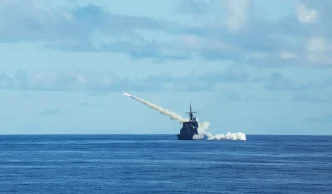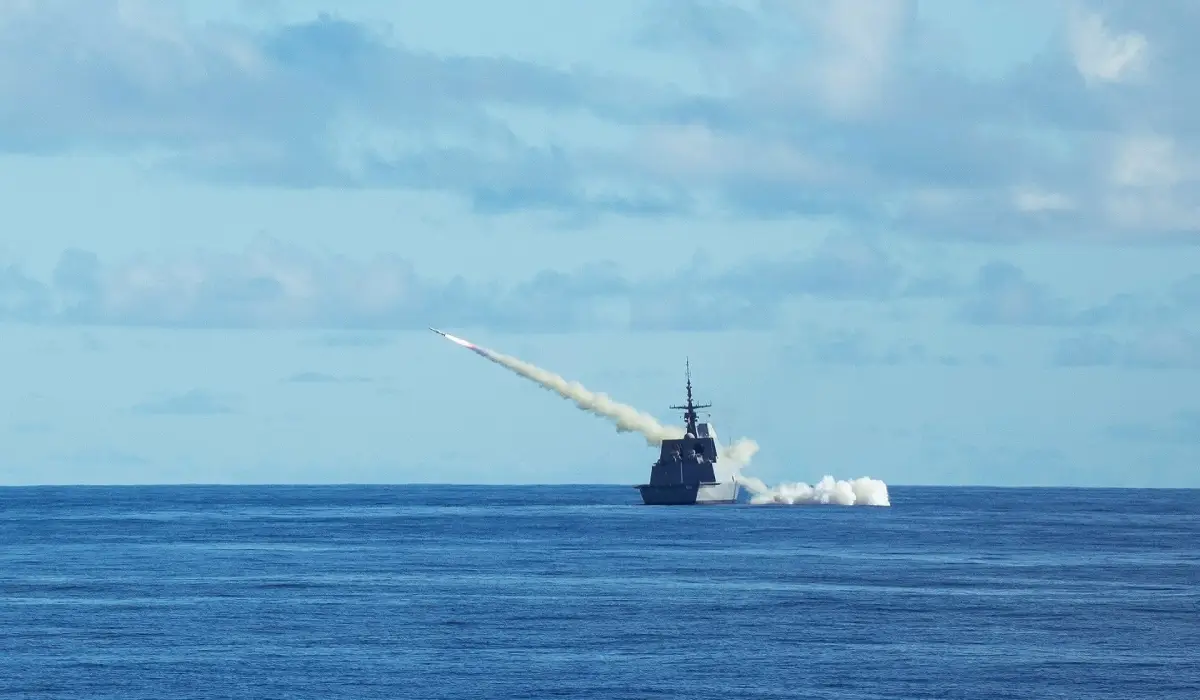In a significant display of military cooperation, the navies of Singapore and the United States have concluded a 12-day bilateral exercise in Guam, underscoring their shared commitment to regional security and interoperability. The exercise, known as CARAT (Cooperation Afloat Readiness and Training), which wrapped up in late October, involved complex maritime drills and joint operations, reflecting the deepening defense ties between the two nations amidst evolving geopolitical challenges in the Indo-Pacific region.
A Partnership Rooted in Regional Stability
The annual CARAT exercise, held since 1995, serves as a cornerstone of military collaboration between Singapore and the US, focusing on enhancing naval capabilities and fostering mutual trust. This year’s iteration in Guam, a strategic US territory in the western Pacific, saw participation from the Republic of Singapore Navy (RSN) and the US Navy, with activities ranging from anti-submarine warfare to maritime security operations. According to a statement from the Singapore Ministry of Defence, the drills aimed to “strengthen interoperability and share best practices” in addressing common threats such as piracy and transnational crime.
Officials from both sides highlighted the exercise’s role in reinforcing a rules-based international order. “Our partnership with Singapore is vital to ensuring freedom of navigation and stability in the Indo-Pacific” said a US Navy spokesperson during a press briefing in Guam. Singapore’s Defence Minister Ng Eng Hen echoed this sentiment, noting that such exercises “enhance our collective ability to respond to regional challenges” as reported by the Straits Times on October 30, 2024.
Strategic Context in the Indo-Pacific
The timing and location of the exercise carry significant strategic weight. Guam, often described as the “tip of the spear” for US military presence in the Pacific, provides a critical vantage point for monitoring activities in the South China Sea and beyond. While neither side explicitly referenced specific regional tensions, the backdrop of China’s growing naval assertiveness and territorial disputes in the South China Sea looms large over such military engagements. Analysts suggest that joint exercises like CARAT send a subtle yet clear message about the alignment of Singapore and the US in promoting a free and open Indo-Pacific.
Dr. Tan See Seng, a defense analyst at the S. Rajaratnam School of International Studies in Singapore, emphasized the broader implications. “These exercises are not just about tactical training; they are a signal of intent to uphold international norms” he told Reuters on October 31, 2024. For Singapore, a small but strategically located nation, maintaining strong defense ties with the US offers a counterbalance to regional power dynamics while preserving its policy of non-alignment.
Beyond geopolitics, the exercise also reflects Singapore’s pragmatic approach to security. As a maritime nation heavily reliant on open sea lanes for trade, ensuring the safety of shipping routes is a national priority. The RSN’s participation in CARAT, alongside other multilateral exercises like RIMPAC (Rim of the Pacific Exercise), demonstrates its commitment to playing an active role in regional stability despite its limited military size.
Operational Highlights and Technological Edge
The 12-day exercise featured a range of sophisticated drills designed to test both navies’ operational readiness. Key activities included joint anti-submarine warfare training, surface warfare simulations, and maritime interdiction operations aimed at countering illegal activities at sea. The RSN deployed its Formidable-class frigate RSS Stalwart, while the US Navy contributed assets including the Arleigh Burke-class destroyer USS Dewey, alongside aircraft and personnel from various units.
A notable aspect of this year’s CARAT was the integration of advanced technologies, such as unmanned systems and real-time data-sharing platforms, to enhance situational awareness. “The use of cutting-edge tools allows us to respond more effectively to dynamic threats” said a senior RSN officer during a media interaction covered by Channel NewsAsia on October 29, 2024. While specifics about the technologies remain classified, such innovations underscore the evolving nature of naval warfare and the importance of adaptability in modern military partnerships.
The exercise also provided a platform for personnel from both navies to engage in professional exchanges, fostering camaraderie and mutual understanding. Cultural events and joint community outreach programs in Guam further strengthened interpersonal ties, with sailors participating in local initiatives as a gesture of goodwill. These softer elements, though less publicized, play a crucial role in sustaining long-term collaboration.
Challenges and Limitations
Despite the success of the exercise, challenges remain in translating such bilateral efforts into broader regional outcomes. Singapore, while a close partner of the US, must navigate its relationships with other major powers, including China, to avoid being perceived as taking sides in great-power rivalries. This delicate balancing act limits the extent to which Singapore can openly align with US-led initiatives, even as it benefits from American military support and training.
Moreover, the effectiveness of exercises like CARAT in deterring real-world threats remains a subject of debate among defense experts. While joint drills enhance preparedness, they do not directly address underlying political disputes or prevent escalations in contested areas like the South China Sea. If tensions were to flare, the coordinated response of allies like Singapore and the US would depend on far more than military interoperability—it would hinge on diplomatic will and international consensus, both of which are often elusive.
Environmental concerns also cast a shadow over large-scale military exercises. Naval operations, particularly those involving live-fire drills and heavy machinery, can have unintended ecological impacts on marine ecosystems. While both the RSN and US Navy adhere to strict environmental protocols, critics argue that more transparency is needed to assess the sustainability of such activities, especially in ecologically sensitive regions near Guam.
Economic Dimensions of Defense Ties
The Singapore-US defense relationship extends beyond the military sphere, carrying economic implications as well. Singapore serves as a hub for US defense contractors and hosts maintenance facilities for American naval assets under a long-standing agreement. The bilateral exercise indirectly supports local economies in Guam and Singapore through logistics, procurement, and personnel spending. For instance, the presence of RSN vessels in Guam boosts demand for port services and supplies, providing a small but measurable economic lift.
Additionally, defense cooperation agreements often pave the way for technology transfers and joint research initiatives, benefiting Singapore’s burgeoning defense industry. While exact figures are not publicly available, the Ministry of Defence in Singapore has previously acknowledged that partnerships with the US contribute to job creation and innovation in areas like cybersecurity and naval engineering. These economic spillovers, though secondary to security goals, highlight the multifaceted nature of the alliance.
Public and Regional Reactions
Public sentiment in Singapore regarding the exercise appears largely positive, with many viewing it as a necessary step to safeguard national interests. Social media posts on platforms like X reflect a mix of pride in the RSN’s capabilities and appreciation for the US partnership, though some users express cautious concern about escalating militarization in the region. “Good to see our navy training with the best, but let’s not get dragged into bigger conflicts” wrote one Singaporean user on October 30, 2024, capturing a common thread of wariness.
Regionally, reactions vary. While allies like Australia and Japan, which share similar security concerns, likely view the exercise favorably, other Southeast Asian nations with closer ties to China may interpret it as a signal of growing US influence. The Association of Southeast Asian Nations (ASEAN), of which Singapore is a member, often emphasizes neutrality in great-power competition, and exercises like CARAT can complicate that stance if perceived as provocative by certain member states.
Looking Ahead
As the Singapore and US navies chart the course for future collaboration, the outcomes of this year’s CARAT exercise will likely inform upcoming engagements, including potential expansions to include other regional partners. The Indo-Pacific remains a theater of both opportunity and uncertainty, where military preparedness must coexist with diplomatic efforts to prevent conflict. For now, the strengthened ties between Singapore and the US stand as a testament to their shared vision for stability, even as questions linger about how far such partnerships can go in addressing the region’s most pressing challenges.
















